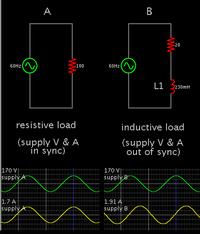Disha Karnataki
Full Member level 5

- Joined
- Jul 20, 2013
- Messages
- 249
- Helped
- 9
- Reputation
- 18
- Reaction score
- 8
- Trophy points
- 18
- Location
- india
- Activity points
- 2,231
inductors are responsible for lagging power factor & it's said that electric companies penalize for us due to this lagging power...
so when we use inductors the things that occur are:::
1)most of the power is being stored in the inductors as magnetic field & then returned to the grid --i really didn't get this point if a component is using some power & later returning it back it's the most awesome thing right???
2) there is negative power developed due to inductor ?????????? i was really baffled when this statement was told to me... though i have finished studying about inductors but i haven't still come up to any conclusion...please if someone can give physical meaning of this, i mean please don't include any mathematical equations........
so when we use inductors the things that occur are:::
1)most of the power is being stored in the inductors as magnetic field & then returned to the grid --i really didn't get this point if a component is using some power & later returning it back it's the most awesome thing right???
2) there is negative power developed due to inductor ?????????? i was really baffled when this statement was told to me... though i have finished studying about inductors but i haven't still come up to any conclusion...please if someone can give physical meaning of this, i mean please don't include any mathematical equations........



